Editorial Cartoons Versus the Muslim Faith
By Hervé St-Louis
February 10, 2006 - 10:50
 |
| The Economist' February 10 2006 Cover |
In the Muslim religion, depictions of the Prophet Mohamed are forbidden. The reaction on the cartoons has led to a boycott of Danish products, death threats against editors and cartoonists responsible for the cartoons, the destruction of the Danish embassy in Tehran, Iran by protesters. In a show of defiance, several other European newspapers have republished the Danish editorial cartoons.
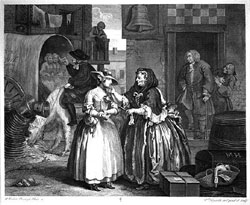 |
| A Harlot's Progress by Hogarth |
Editorial cartoons are very important to the world of comic books because they have given birth to comic strips, which in time were collected in compilations and sold again as comic books. In editorial cartoons, sequential illustrations were often used to show the progression of subjects depicted by illustrators. One such early comic strip was William Hogarth’s Harlot’s Progress, etched in 1732. It is about a young countryside woman arriving in a city and slowly becoming a prostitute.
Religious Art
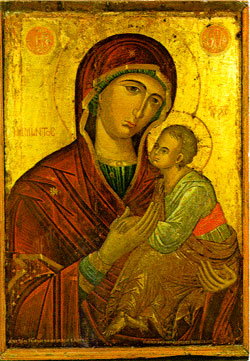 |
| Virgin Amolyntos or The Immaculate Virgin, 16th Century |
The one limit imposed by Christianity was to not worship depictions of religious figures. This did not stop Byzantine Art in the Eastern Roman Empire to flourish. In particular, icons depicting Jesus Christ, the Virgin Mary and more, were worshipped by the Romans and Greeks in that area. In the Orthodox Church, icons still play a prominent role.
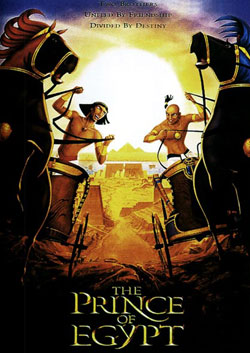 |
| Dreamworks' Prince of Egypt |
Muslim Comics
Of note, Arab-based comics are available and carefully thread around the issue of Islam in their contents. Kuwait-based Teshkeel Media Group that republishes Marvel Comics in for the Middle Eastern market has developed its own line of comics. One of them, The 99 line of comics, features characters with one attribute each based on ancient Islamic sources. The company is very careful to not say that the character’s powers make them a match for Allah.
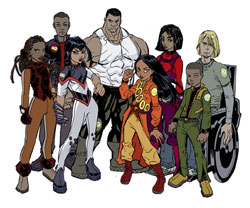 |
| 99 by Teshkeel Media Group |
In both instances, the comic book creators are carefully threading water, afraid of creating controversy while publishing positive Muslim role models for Middle Eastern readers. Muslims and Arabs in particular, in the world of North American comics, are often depicted as villains and extremists. Middle Eastern publishers like AK Comics and Teshkeel have a delicate task on their hands.
To Publish or to Not Publish
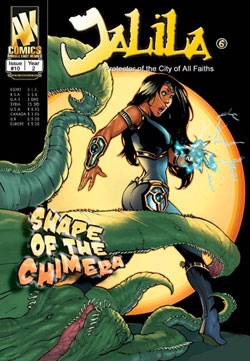 |
| Jalia #6 by AK Comics |
I finally found the illustrations. I asked myself whether I should post them at The Comic Book Bin in support of freedom of the press. But there are a few concerns. First, I asked myself what’s the point of publishing them?
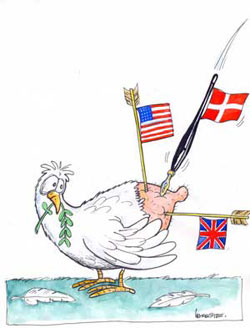 |
| The opinion of Cuban Cartoonist Enrique Lacoste |
Nevertheless, I’d like to describe the caricatures to those who seek them out. I don’t know if it’s against Islam to describe the contents of an illustration, but I’m not a Muslim, and I want to inform those who like me wonder what the hell this uproar is about. You’ll notice that the media doesn’t show any of the cartoons in news broadcasts, in the papers or on the Web also. I wonder what their reasons were.
Depictions of Prophet Mohamed
The first illustration features a row of suspects with turbans. A man standing behind a protective window is trying to identify which one of them is the Prophet Mohamed. The first guy on the left, is a peace-loving hippy, next, is a small woman, probably in her 50s. She looks like a secretary. Next, there’s a guy that looks like Jesus Christ. Next, there’s Buddha, followed by a tanned guy with a white beard who could very well be Arab. Next, there’s a Jew with his curly hair. Finally there’s a stupid guy, who reminds me of Bill Gates.
The next cartoon features a guy that looks similar to the Bill Gates look alike from the previous cartoon. He may very well be a Danish personality but not being Danish, I have no idea who he is. He sports a turban with an orange on his head that says “PR stunt.” He holds a stick character cartoon of Prophet Mohamed.
The next drawing has an Arab-looking guy with two moon crescents on his head. They resemble horns, as if he were a demon. Please don’t blow me up. He looks peaceful enough.
The next drawing in line features a cartoonist drawing the Prophet Mohamed on a drafting table. That illustration is meant to show the process of giving a human depiction of the prophet, the very act that is against the teachings of Islam.
Next is a guy that looks like a Bedouin in a desert pulling a donkey. He looks unhappy.
Next is a series of symbols assemble together to resemble people. The symbols show an angry crowd. The base symbols are a star of David and a moon crescent. This cartoon protests against Muslim women forced to cover their faces.
Next, there’s a sheik in a fortress that’s holding a paper in his hands and reading it. He tells his henchmen with large sabres ready to cut their opponents into pieces to hold off, as the illustrator is a Danish Christian who doesn’t believe.
The next drawing shows an Arab with a stripe shirt and jeans teaching on a black board. On the board, written in Arabic, a translation tells us that the Danish folks are nothing but provocateurs.
Next, there’s a composition using various symbols, such as a star, and a crescent. They are part of a composition of an Arab with a turban.
The next illustration shows a man with a beard with two women dressed in black with their face totally covered, except for their eyes. The man’s eyes are covered with the exact same type of box which only allows us to see the eyes of the women. The man holds a large knife.
The next illustration is the funniest of the series - considering most were not funny at all. I would even say that they are boring and uninspired. A Muslim man in heaven, Similar to Saint Peters, at the front end of paradise, tells cripples who have self-detonated bombs in suicidal attacks to stop doing it because they are running out of virgins up there.
The last illustration is the one that has caused the most uproar. It features the head of a Muslim man with a bomb that’s been detonated on his turban. Many have claimed that this illustration was the Prophet Mohamed.
The King’s Fool
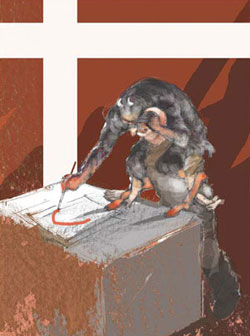 |
| An Iranian Cartoonist Responds To The Danish Caricatures |
Yet, political cartoons that used to be staples of Western culture have been morphed into bland comic strips with funny animals that are gaining new grounds day by day. For example, Iran hosts a vibrant community of political cartoonists that fight against their political regime. In their case, their strength doesn’t stem from the portrayal of the Prophet Mohamed. It stems from the very power of cartoons. Illustrations with meaning that can bring down any institution or man.
I’m not going to post the illustrations on the site. The Comic Book Bin is not about politics, but about comics. Also, I really don’t have anything to add to this debate. Don’t expect me to send you the illustrations privately nor help you find them on the Web. Don’t even try, you’ll be wasting your time and I’m telling you, I won’t respond to demands.
Related Articles:
The New Adventures of Superman and The New Adventures of Batman Cartoons
3D Cartoon Raised by Flat Cartoons
Fantagraphics Bookstore Has a "cARToons" Anniversary
Coolstreak Cartoons Is No More - Now It's Toon Doctor
Secret Documents of "Transformers" & "G.I. Joe" Cartoons Creator at Auction
Creating Animated Cartoons with Character
Postage Stamp Funnies: Dirty Cartoons XXX
Walker's Home for Wayward Cartoons
Soviet Cartoons Go West
Grooviest cartoons from the ‘70s comes to dvd
